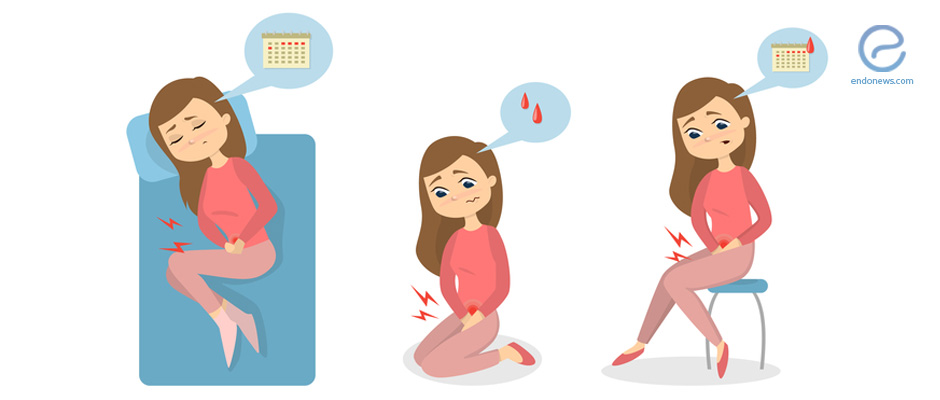Is there any association between menstrual pain and ovarian cancer?
Oct 4, 2017
Ovarian cancer and menstrual pain: a study from Ovarian Cancer Association Consortium (OCAC)
Key Points
Highlight:
- Women reported severe menstrual pain showed a small increase in risk of ovarian cancer
Importance:
- It is unclear whether the menstrual pain is associated with risk of ovarian cancer. Some studies, but not all- have previously found an association.
- Data regarding the association between ovarian cancer by histologic subtype and menstrual pain is lacking.
What's done here:
- Case-control study of 10,592 ovarian cancer cases and 13,320 controls.
- The ovarian cancer cases included 8,275 invasive and 2,062 borderline cases, as well as 255 cases of unknown morphology.
- Invasive epithelial tumors were categorized by histologic subtype: high-grade serous (n=3,255), low-grade serous (n=1,199), mucinous (n=521), endometrioid (n=1,251), clear cell (n=639), and other (n=953). Borderline tumors were characterized as serous (n=1,165), mucinous (n=801) or other (n=67).
- The menstrual pain was assessed using either direct questions about menstrual pain experience, or indirect questions about the use of hormones or medications for menstrual pain.
- Multivariate logistic regression analyses were performed to calculate the odds ratio (OR) for the association between severe menstrual pain and ovarian cancer.
Data:
- In the study using direct question, severe pain was associated with a small increase in the risk of ovarian cancer (OR=1.07, 95% CI: 1.01- 1.13) after adjusting for endometriosis and other confounders.
- The association were more relevant for clear cell (OR=1.48, 95% CI: 1.10-1.99) and serous borderline (OR=1.31, 95% CI: 1.05-1.63) subtypes.
Limitations:
- Recall bias and undiagnosed endometriosis in the control group may affect the results.
- No detailed information on endometriosis provided.
Lay Summary
Inflammation may be important in ovarian carcinogenesis. Epidemiological studies show that inflammatory conditions such as endometriosis and pelvic inflammatory disease have been associated with an increased risk of ovarian cancer, while regular use of non-steroidal anti-inflammatory drugs has reduced associated risk.
Menstrual pain, also known as "dysmenorrhea" is commonly associated with increased inflammation and has been evaluated for ovarian cancer previously. However, there remains significant uncertainty between the association of menstrual pain and certain histological subtype of ovarian cancer.
This broad analysis of case-control studies consisted of 10,592 ovarian cancer cases and 13,320 controls pooled in Ovarian Cancer Association Consortium from Australia, Connecticut, Hawaii, Denmark, New England, North Carolina and Los Angeles. Amongst the cases include 8,275 invasive and 2,062 borderline ovarian cancer cases, as well as 255 cases of unknown morphology. Invasive cases were categorized by their histologic subtype including high-grade serous (n=3,255), low-grade serous (n=1,199), mucinous (n=521), endometrioid (n=1,251), clear cell (n=639), and other (n=953). Borderline tumors were characterized as serous (n=1,165), mucinous (n=801) or other (n=67). The menstrual pain was assessed using either direct questions about pain experience, or indirect questions about the use of hormones or medications for menstrual pain. Multivariate logistic regression analyses were then performed to calculate the odds ratio (OR) for the association between menstrual pain and ovarian cancer, adjusting for potential confounders.
The authors observed a small increase in ovarian cancer risk for women who reported severe menstrual pain, compared to those without (OR=1.07, 95% CI: 1.01- 1.13). The association was more relevant to women experienced frequent menstrual pain for longer duration >12 years. Moreover, the risk were more evident for clear cell (OR=1.48, 95% CI: 1.10-1.99) and serous borderline (OR=1.31, 95% CI: 1.05-1.63) histologic subtypes.
Endometriosis is related to significant menstrual pain and is an ovarian cancer risk factor. In this study, analyses to adjust for endometriosis did not alter the association observed between severe menstrual pain and ovarian cancer risk. However, this large pooled population may have undiagnosed endometriosis that confounded the study interpretation. In summary, this study suggests that severe menstrual pain is associated with a modest risk of ovarian cancer irrespective of endometriosis. Future studies are needed to understand the relative impact of menstrual pain, as opposed to endometriosis-related pain.
Research Source: https://www.ncbi.nlm.nih.gov/pubmed/28833087
menstrual pain ovarian cancer risk endometriosis-cancer

